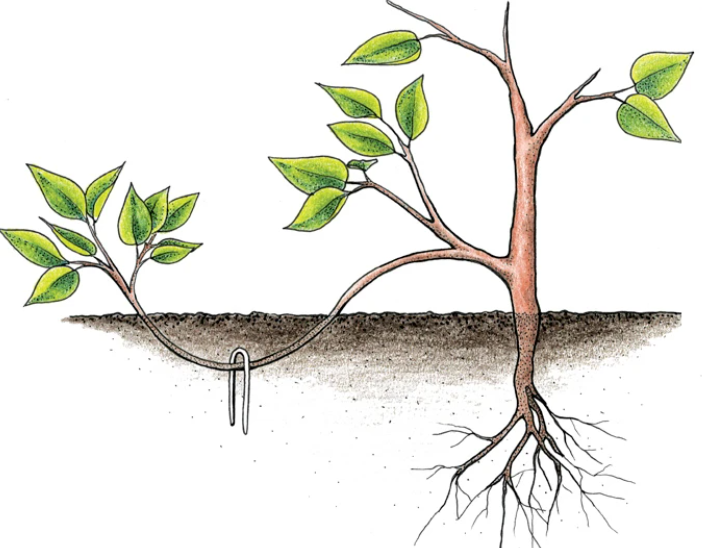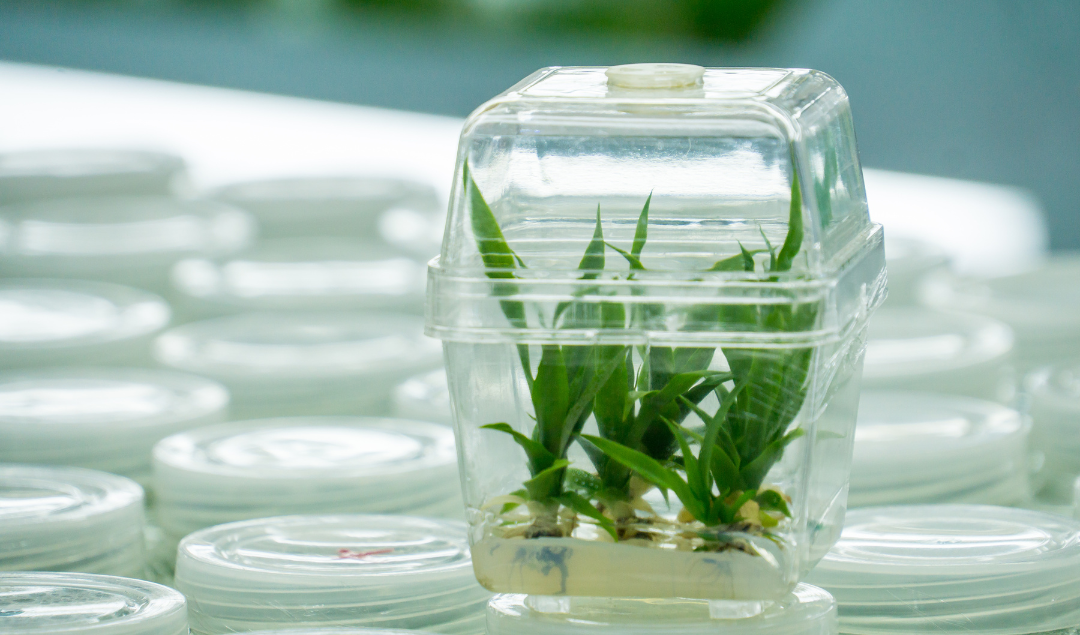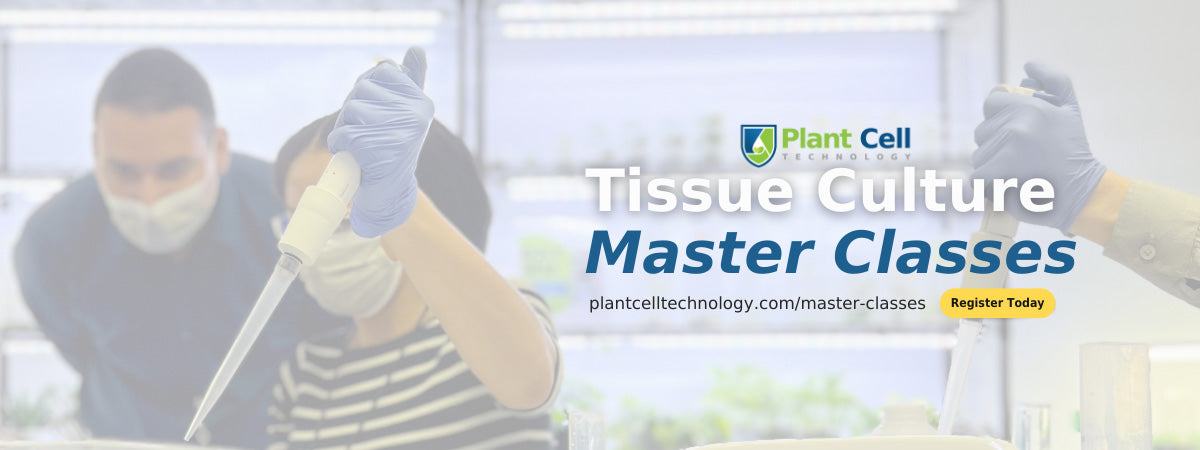
Seven Methods of Plant Propagation
As a content and community manager, I leverage my expertise in plant biotechnology, passion for tissue culture, and writing skills to create compelling articles, simplifying intricate scientific concepts, and address your inquiries. As a dedicated science communicator, I strive to spark curiosity and foster a love for science in my audience.


Each type of plant propagation technique has its own advantages and disadvantages and you choose them based on the plant you are trying to grow and the purpose you want to achieve.
Introduction
We all desire to create a small garden and decorate our home with beautiful and fascinating indoor plants. However, many of us have fail to understand how we can really do this. Especially, growing a specific plant seems the most challenging task to do. Some of us buy plants from cultivators or garden centers or nurseries but fail to maintain them! This costs us a lot of money, time, and effort put into the process.
You must know that different plants require different approaches to grow and develop in natural environment. For example, some can only be grown using seeds, while the other (such as the rose plant) can be grown faster by using the cutting method of plant propagation.
Each type of plant propagation technique has its own advantages and disadvantages and you choose them based on the plant you are trying to grow and the purpose you want to achieve.
In this article, we will cover seven methods of plant propagation that you can use to grow your desired plants. It will help you to create your own small kitchen/home garden and save your money. These seven methods include: seed propagation, cutting, layering, division, grafting, budding, and tissue culture technique.
Let’s get started!
What do we mean by Propagation?
Propagation is simply multiplication or production of plants, which you can do by using your own plants! Because of the commercialization of crops, several techniques have been developed to grow plants. All techniques are designed to achieve specific goals, like uniformity in crops, increased productivity, disease-resistant plants, and plants with desired characters.
Mainly these techniques are divided into two categories depending on the means of propagation: Sexual means of propagation and asexual means of propagation. Let’s have a look at each of them in detail.
Sexual Propagation
Sexual propagation of plants involves the union (fertilization) of pollen and egg leading to seed formation. So, it can also be called ‘seed propagation’. It’s an old, easy, simple, and effective technique for ornamentals or flowering plants, vegetables, fruits, and medicinal plants. It allows for genetic diversity in plant species and creates new varieties and cultivars of plants. Also, seeds can be stored for a long period of time.
The disadvantages of this technique are delayed flowering and fruiting, plants that do not produce seeds can not be propagated by this method, identical plants can not be produced, and mass production is harder to achieve.
Considering these disadvantages, asexual propagation methods are being developed and followed by several culturists and hobbyists worldwide.
Asexual Propagation
Asexual propagation of plants can also be called ‘vegetative propagation’ because it involves the use of vegetative parts of plants like leaves, stems, roots, or modified organs. It’s the best method to use to clone your plants, which means to produce plants identical to their parents. It involves methods like cutting, division, layering, grafting, budding, and tissue culture techniques. These techniques are commercially exploited mainly to produce horticulture plants.
The demerits of the asexual means of propagation are: difficulty in producing new varieties, the practice and skillsets required to follow these methods, and plants being more prone to any kind of stresses.
1. Cutting
This is cutting the vegetative part of the plant (leaf, stem, and root) and then planting it again to regenerate the whole plant. The three types of cutting are named after the plant part being detached/cut:
- Stem cutting
- Leaf cutting
- Root cutting
The technique is also categorized based on the type of stem the parent plant has, such as herbaceous cuttings (for herbaceous plants), softwood cuttings (for evergreen shrubs and conifers), and hardwood cuttings (for deciduous and evergreen shrubs).

Source: https://www.majordifferences.com/2013/03/differen...
This is a suitable technique for perennials (plants that live for more than two years). It involves dividing the plant by digging and moving it to an already prepared site. This helps the plant to rejuvenate and reduce water and nutrient competition. The technique is commonly used to grow herbaceous perennial plants and sometimes woody shrubs (in this case division should only be performed when the plants are in dormant phase). While dividing the plant part, ensure it doesn't get damaged.

Dividing perennial plants by using a garden fork.
Source: https://www.gardenersworld.com/plants/five-method...
In this technique, the attached and bent branch of the plant is covered with soil and allowed to root. After the emergence and development of roots that specific part of the plant is cut and allowed to grow as a new plant. This is called ‘layering’.
Different types of layering technique include:
- Simple Layering: A shoot or branch is bent, a part of it is buried in the soil, and the tip of he plant stick out.
- Compound Layering: Similar to simple layering, but with a longer, flexible branch. Cover parts with soil and leave parts exposed alternately.
- Tip Layering: For plants with long branches, put the tip of a new branch into the ground to grow.
- Mound Layering: When the plant is dormant, cut it at ground level and cover it with soil.
- Air Layering: Here, the new roots grow above the ground. Choose a branch and remove a strip of bark, then cover the area with a special soil and a plastic cover.

A schematic diagram showing a simple layering process.
Source: https://www.groworganic.com/blogs/articles/how-to...
This involves cutting a twig of one plant and joining it with the stem of another plant in such a manner that they form a unit and function as one plant. It is a bit of a complex process but allows you to bring the desired character to your plant. However, be sure to sterilize your hands and tools to make sure you don’t transfer any infections during the process.
To obtain successful union of attached plants, ensure the following factors:
- The rootstock and scion chosen for the process are compatible
- Both plants parts are at a suitable physiological stage
- Cambium of both the parts are in contact
- Union point is not dry and there's no infection

A schematic diagram of the grafting technique.
Scion: the upper portion of the graft.
Rootstock: the lower portion which is providing root.
Source: https://www.toppr.com/ask/question/explain-grafti..
In this method, a cut is made in the rootstock and a single bud with little or no wood is inserted into it in such a way that they unite and grow as a new plant.

Source: https://www.toppr.com/ask/question/bud-grafting-i...
This is the most recent and advanced technique in which plant tissues are grown in media under controlled and sterile conditions/environments. It is extensively used for commercial purposes to produce clones of plants or mass produce plants. It also provides several advantages over all the traditional methods explained above.
Advantages of tissue culture technique:
- It allows for the production of clones or exact copies of the mother plant.
- Plants with desired traits or characters can be grown using this technique.
- It is beneficial in propagating plants without seeds.
- It allows the production of plants in a shorter period of time compared to traditional techniques.
- Plants that are difficult to grow by traditional methods can be grown by this method.
- Disease-free plants can be produced.
- Mass production of plants is possible with this technique.
- Enhance productivity.
- Easy transportation of plants.

Which technique you should choose depends on what type of plant you want to propagate, the purpose of your propagation, and how much time and effort you can put into the process. So, make your choice and get started working on your greeneries!
Want To Be An Expert In Tissue Culture Application? Plant Cell Technology Can Help!
Plant Cell Technology is helping tissue culturists around the world by providing unique and world-class products and services that streamlines their tissue culture workflows. It has MS media, agar, gellan gum, Plant Preservative Mixture (PPM), culture vessels, Biocoupler (TM), and masks in its store to facilitate your processes.
And, that’s not it! Plant Cell Technology also offers consultation services to culturists of all sizes that help to get instant solutions to your tissue culture problems.
However, if you're willing to learn directly from an expert, we've got you covered!
Our comprehensive tissue culture master classes are designed to learn everything about tissue culture, ranging from theoretical concepts to hands on experience on explant and media preparation, multiplication, rooting, and acclimation of plants. Additionally, it also covers advanced tissue culture techniques, such as shoot apical meristem and synthetic seed production to make you the next pro in the industry.
All our masterclasses are taught by tissue culture experts having experience of 10-30 years in the field. They not only help you learn the tissue culture concepts but also share their personal success and failure stories to learn from them and start your tissue culture journey with a bang.
Seems something long awaited? So, why wait? Sigh up for your choice of tissue culture master class TODAY and excel in your tissue culture game!
References
- https://ncert.nic.in/vocational/pdf/kegr103.pdf
- https://resourcecentral.org/plant-propagation-meth...
- https://en.wikipedia.org/wiki/Plant_propagation
- https://extension.umaine.edu/gardening/manual/prop...
- https://en.wikipedia.org/wiki/Plant_tissue_culture
- https://www.toppr.com/ask/question/explain-graftin...
- https://www.groworganic.com/blogs/articles/how-to-...
- https://www.gardenersworld.com/plants/five-methods...
- https://www.majordifferences.com/2013/03/d
Blog Categories
View by Level
Popular Blogs

Is Tissue Culture a Profitable Side Hustle? (Breaking Down the ROI)
Introduction Plant tissue culture (PTC) is capturing the attention of commercial growers, hobbyists, and aspiring entrepreneurs. This innovative method offers...
Read More
Media pH: Why It Matters More Than You Think in Plant Tissue Culture
Introduction Plant tissue culture is a cornerstone technique in modern plant biotechnology, enabling the propagation of plants under sterile and...
Read MoreSubscribe to Our Newsletter
2 comments
I am trying to multiply reproduce plants from my gerberas I have growing Some are very rare and very hard to find
I am trying to learn how to reproduce my gerbera flowers/ plants I have a special type of gerbera I need to grow more of as they are fairlie rare and also very expensive if you can find some








Join the conversation
Your email address will not be published. Required fields are marked